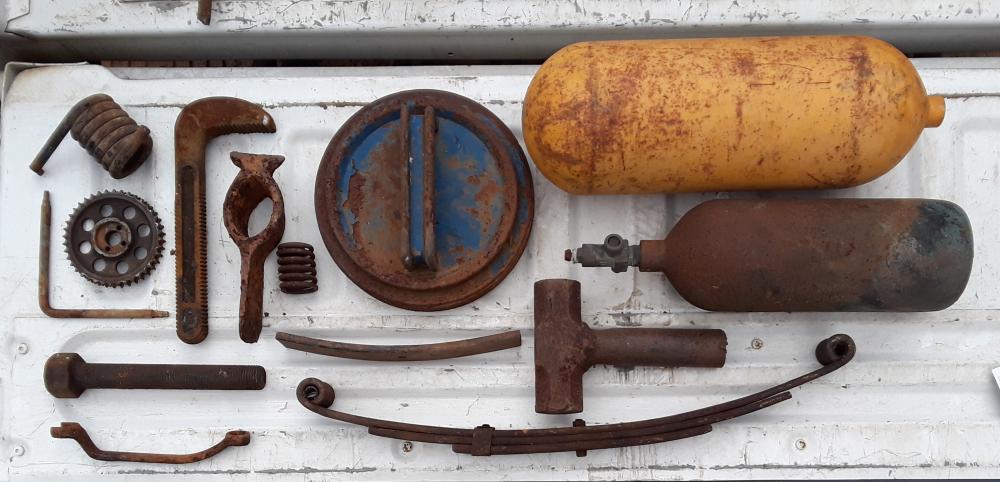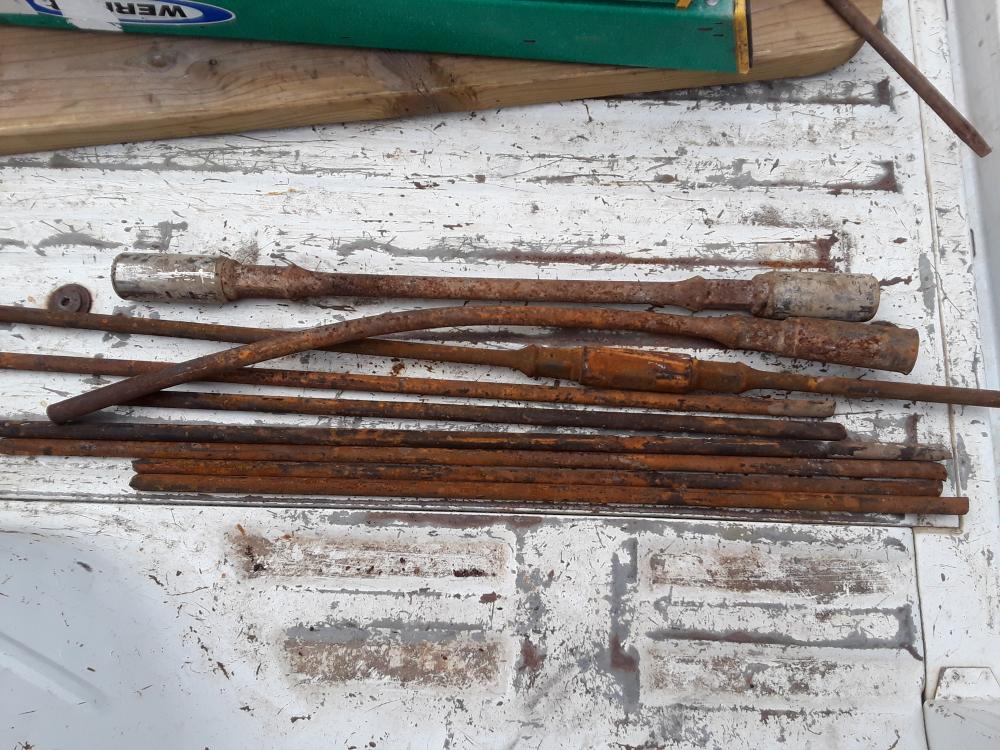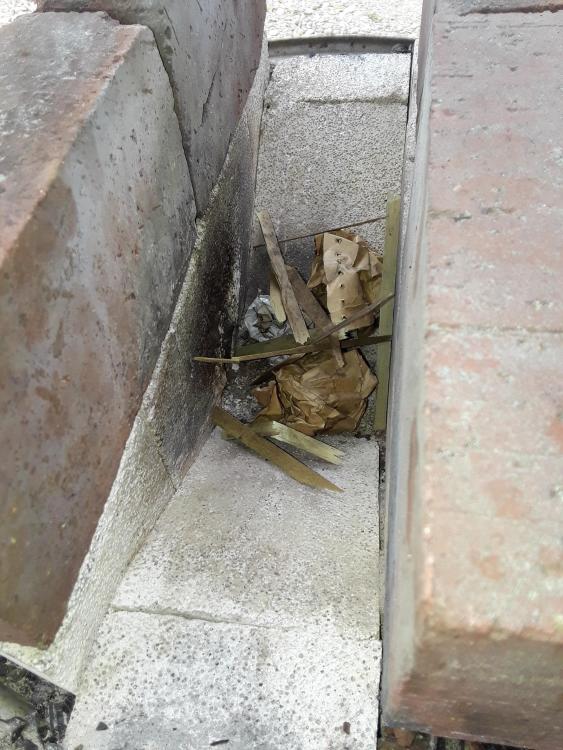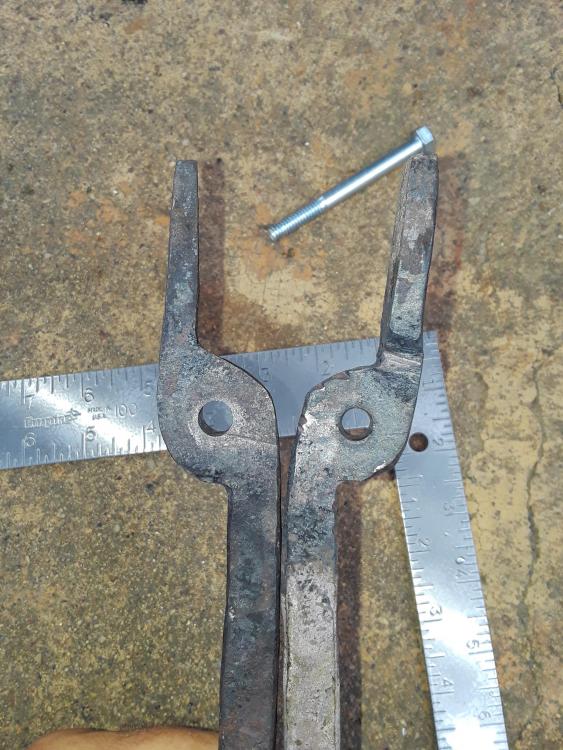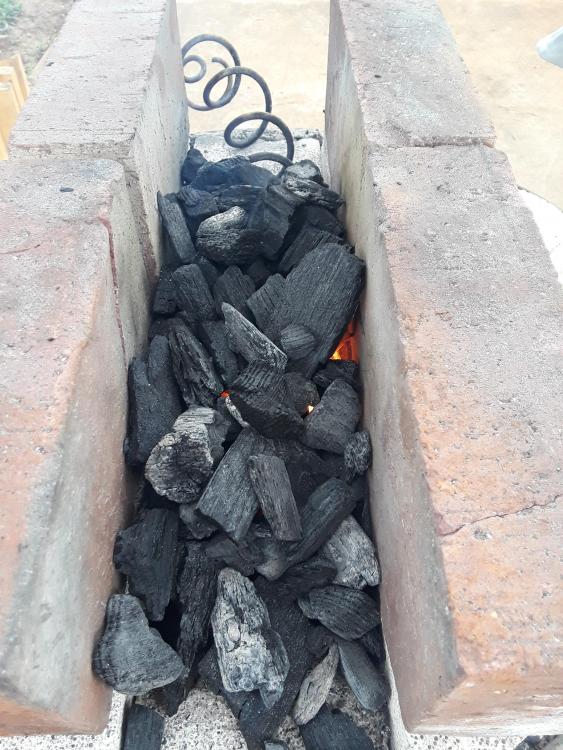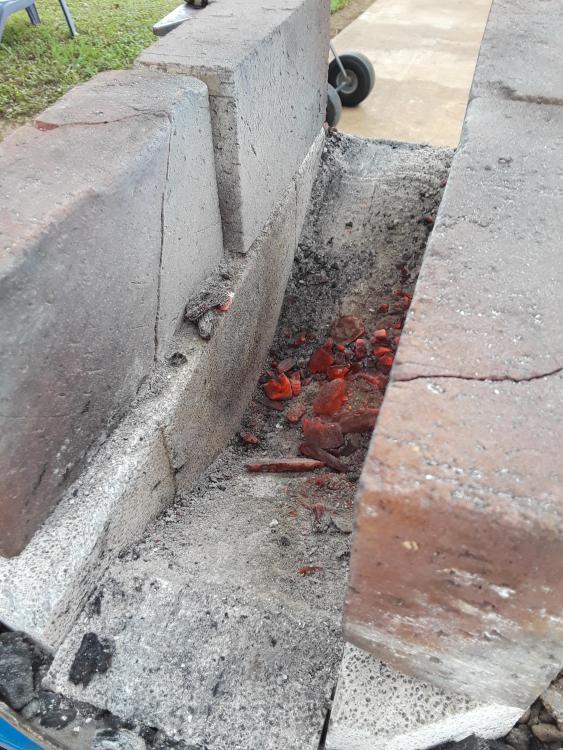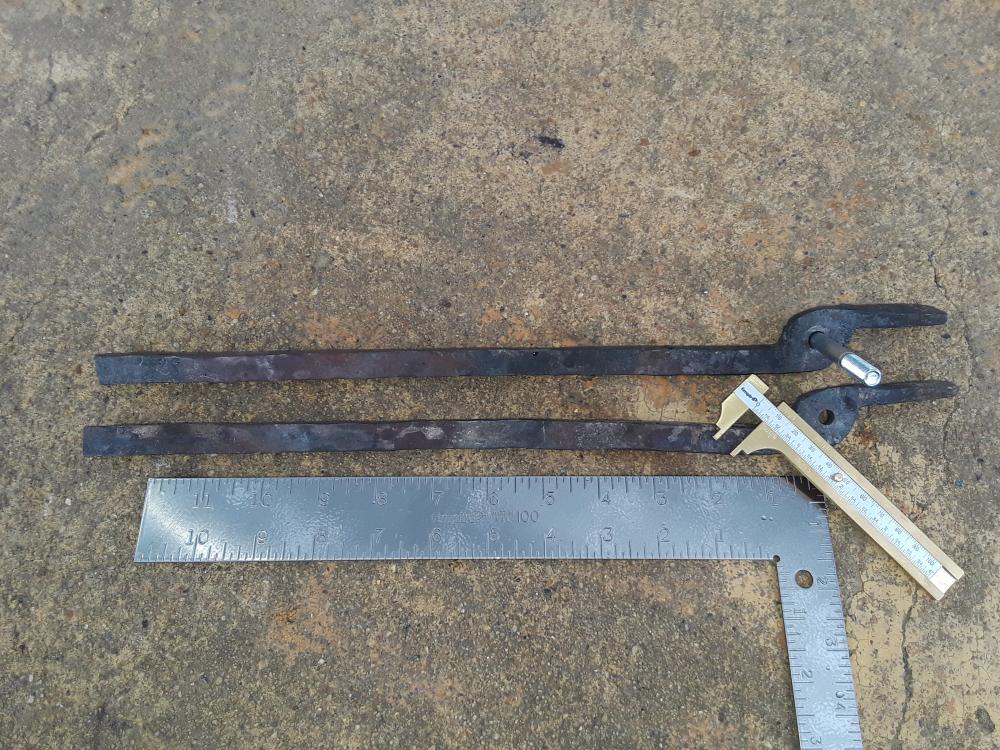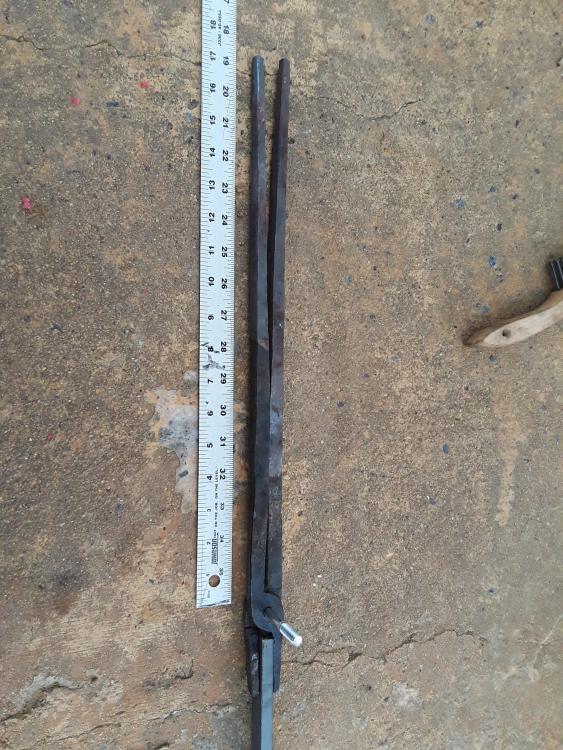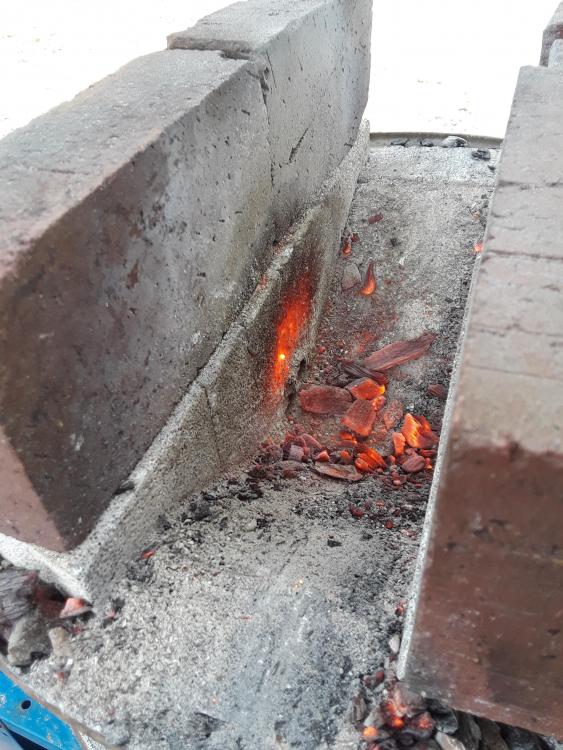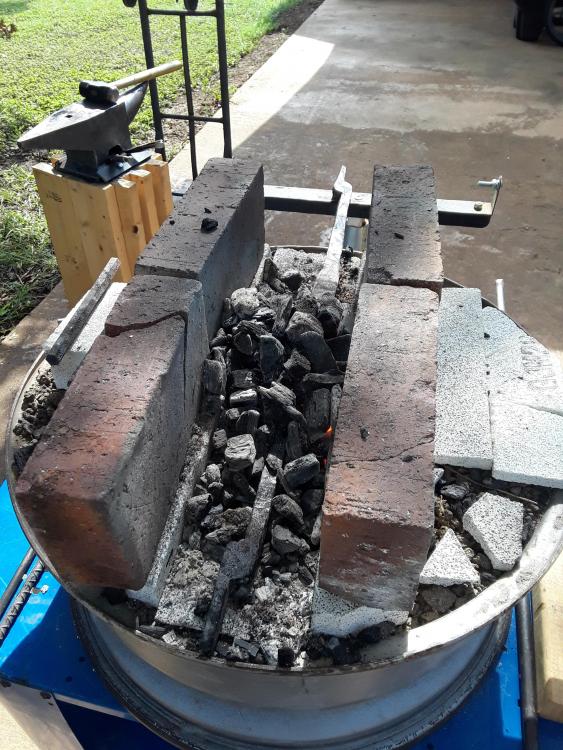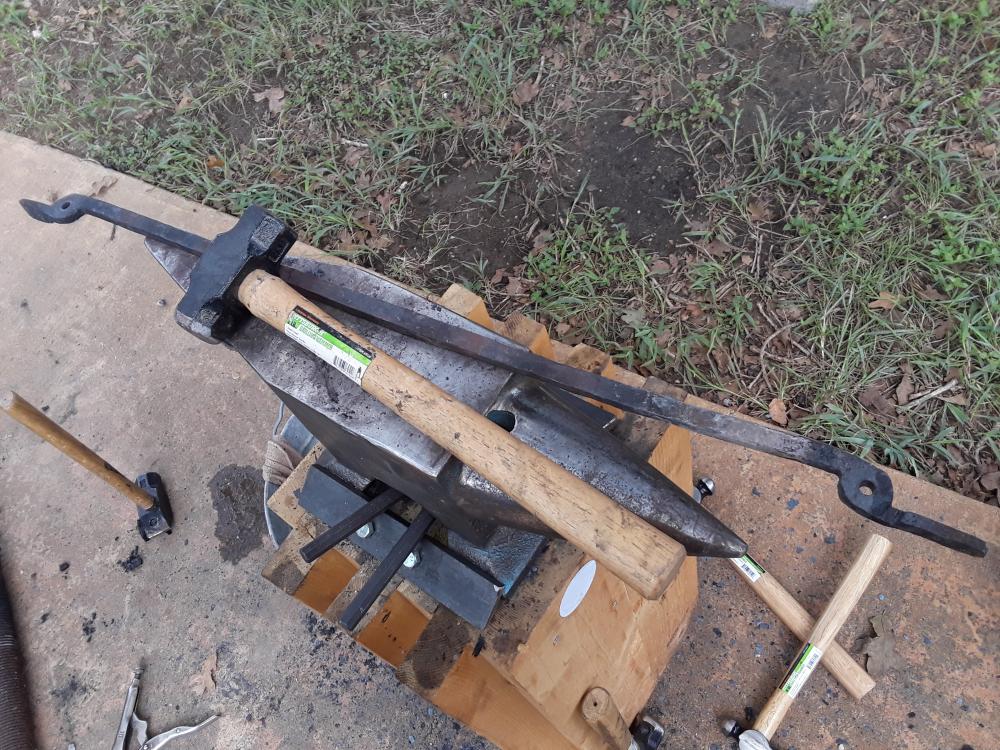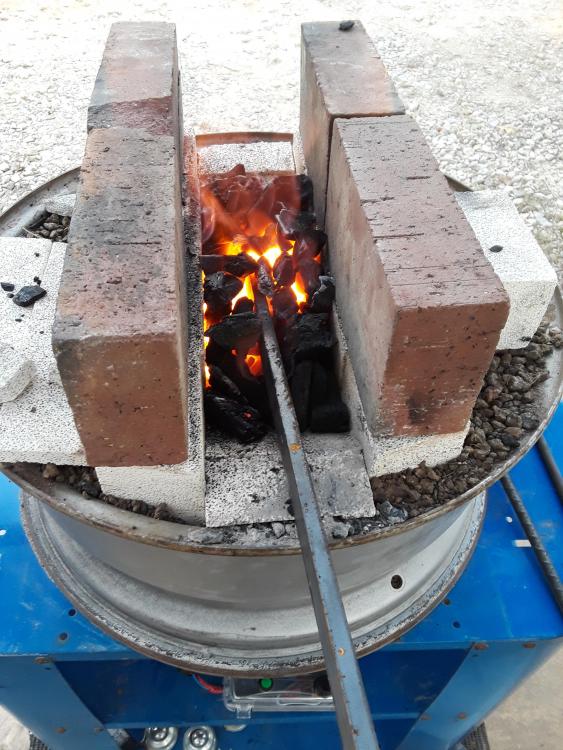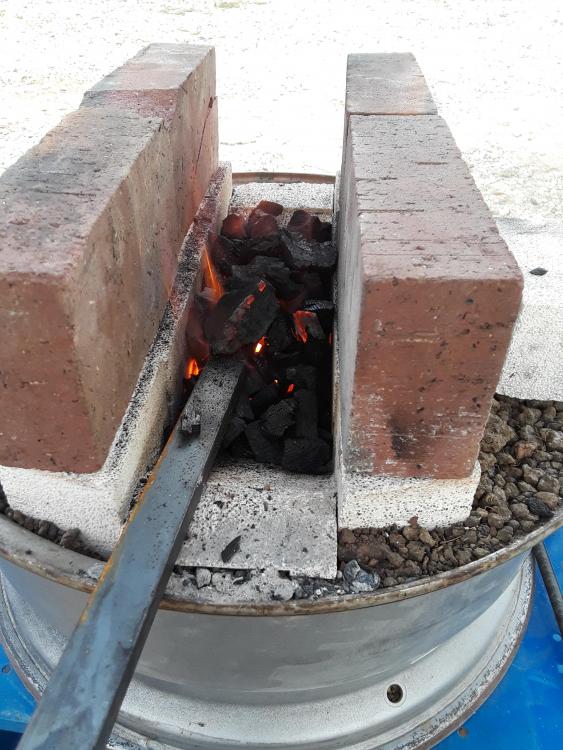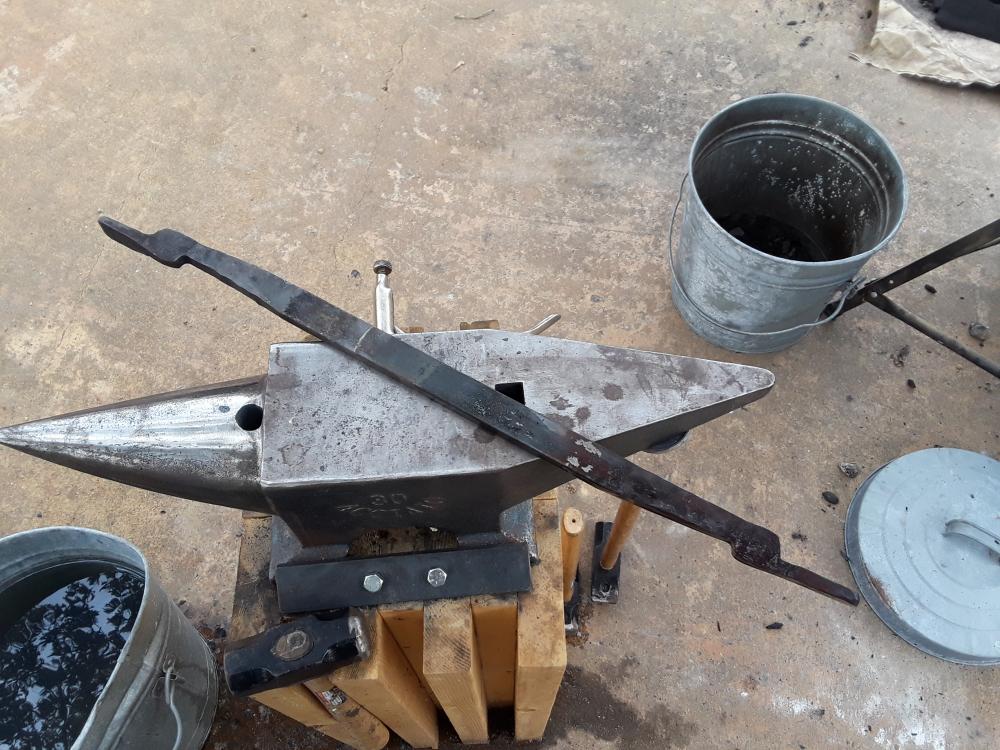-
Posts
139 -
Joined
-
Last visited
Content Type
Profiles
Forums
Articles
Gallery
Downloads
Events
Everything posted by wirerabbit
-
I'm more familiar with measures to prevent radiant heat from heating flammable materials rather than steps to prevent cutting and welding sparks from starting fires. Wherever heat sources (IFB kilns) could not be placed at least 16 inches from wooden/plasterboard walls [I always measured out two feet] a two inch air gap made by standing off steel plate like roofing tin etc. from the flammable wall made for excellent heat shields. Need to allow a gap at the floor so natural air currents carry off the intercepted heat. A fan on low can do wonders in mitigating heat build up. From what I understand many of the fire proofing building methods are in place to provide extra time for escape before collapse or rapid, catastrophic spread of the flames, in case of a structural fire, rather than actually preventing the fire in the first place. JMTCW T
-
Trip to the junkyard one county over. Not a jaw-dropping haul, but now I have some steel for tooling. I also grab stuff that looks cool to me. Might just hang it from a tree and get out the bb gun. Oh, almost forgot the good part. This is just a fist full of the hundreds of pounds of this stuff. Good friend who was out scrounging with me says it's sucker rod. I've never seen sucker rod. Now I have. I'm going to be anxious to heat some of this stuff up and do some testing. T, near Jeddo TX
-
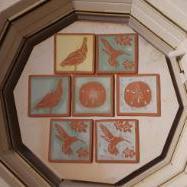
What did you do in the shop today?
wirerabbit replied to Mark Ling's topic in Blacksmithing, General Discussion
Power hammer = striker on retainer -

What did you do in the shop today?
wirerabbit replied to Mark Ling's topic in Blacksmithing, General Discussion
I took Rochester's ( advice and drew out over the horn. I have dressed some HF sledges with a flat and a round side. I use the round side and the horn. Have a 3# and a 2# with rounding faces. I also have a 3# cross peen, also a HF purchase, and have tried drawing out with the peen in one of the earlier sessions. I feel I am managing the fire better now and obtaining much better heats, so I may have to try the peen again. I tried the half faced blows with rotation for pulling a taper ala Brazeal, Steele and Van der Steeg, but I still don't have the control yet for that to be useful. I'll get there. It seems very intuitive. Thanks for the encouragement. T -

What did you do in the shop today?
wirerabbit replied to Mark Ling's topic in Blacksmithing, General Discussion
I enjoy seeing what folks are up to in their shops. What I did in the driveway today: I continued on my quest to better understand my charcoal fire. Put another two hours on the forge. I love starting the forge. It's so easy to light. Psst, have a propane torch handy. As you can see my tong blanks are not identical. Shocker. Tthe major problem being the holes are not both 5/16". First order of business was to drift the smaller hole out to 5/16". Used a bolt to check size. I'll probably cut that bolt off and use it as a rivet when the time comes. Next on the list was to draw out the reigns of my blanks, but while the fire was getting established I decided to uncoil some of that spring I had. I think I will make a watering can handle out of this piece once I straighten it all out. Blanks went from 13 inches from hole to end of stock to just about 19 inches . I still have about 3 or 4 inches of reign to thin out back towards the boss, then knocking off the corners, but I ran out of time. Here are the halves set together with my 5/16" flat stock in the jaws for comparison. Still have some straightening out to do. Wow, you can't really tell until you fit them together at their pivot. These look pretty knock-kneed! I'll make these to fit that stock. My next project will be improved tongs using the same material and my first set of tongs! Check out the tuyere wall after I pulled out most of the hot wood coals at the end of my forging session. HOT. I might leave my air setting alone next forging session and instead bump the tuyere into the firepot an inch to see how the fireball reacts. The opposite side of the firepot was not incandescent and has no degradation like the tuyere side. I keep learning quite a bit. I realize that I could use a slightly heavier hammer for the drawing out of the reigns. I have a three pound hammer. But, my anvil is just not big enough to handle any heavier hammer. It was walking about as I used the horn to draw the reigns. I can't imagine what would happen if I had a 4 pounder. Taylor -

Help me with my charcoal forging questions
wirerabbit replied to wirerabbit's topic in JABOD - Just A Box Of Dirt
Glenn, sound scientific method to be sure. Thanks for the reminder. I'm currently only working on blower speed. I am holding off on changing the tuyere height for later, AFTER I have slagged the IFB that is holding the tuyere. I'm starting to think that the amount of oxidation I was seeing was normal. I am repeating another forging session with my last air setting just to see. I'm also going to see if I can burn a piece of mild steel in the fire just so I know what that looks like and how long it will take in my forge. Empirical evidence is king. I'm not exactly sure why the shape of the box matters -- quadrilateral or circular -- as long as the parameters for a good charcoal fire are met. They both hold dirt, sideblast tuyere, and fuel. I think the only limitation this first forge of mine has is its 17 inch usable interior diameter. I will not be able to expand the fire pot much more than another brick wide (from 4" x 8" to 8" x 8" x 8") but from what I have read on IFI bigger pot is not always better. Can you tell me what you mean so I can better understand? I appreciate your input. Taylor Thanks for the info on what you do. I'll keep that in mind as I forge my next two hours. Wish I could get pictures to show flames better. I'll be visiting places once the 19 has been tamed. Hopefully I can find a charcoal blacksmith close by who works with it regularly. That will be a big help. Taylor -

Help me with my charcoal forging questions
wirerabbit replied to wirerabbit's topic in JABOD - Just A Box Of Dirt
Hey Dennis, No forge problem, a me problem. I have been incrementally testing air settings, forging at least two hours on each one and last session was 50% of my maximum output. This was the first time I noticed scaling in the fire and thought perhaps excessive air. The steel did not burn. The three fire rakes, two pokers, one set of tong blanks, and several hooks I have already made indicate to me that the forge works. I could be wrong, what do I know? Do you forge with charcoal and do you have good strong straight flames coming from your fire when the blower is on? Thanks for the confirmation. Taylor -

Help me with my charcoal forging questions
wirerabbit replied to wirerabbit's topic in JABOD - Just A Box Of Dirt
Hey Irondragon. No. I was not referring to fire fleas, but I can see how it sounded. As it stands I have very little fire fleas at all in any of my forging sessions because I did my homework. Yea, forum! However, i did see a small increase today. I was referring to the straight flames that exit the charcoal pile when the blower is on. These "spikes" are different from the whispy flames that come from the pile at much lighter air flow, and different yet still from the lazy, almost invisible ones when the fire is at rest. I was wondering if I was driving in too much air. The stock seemed to get hot just fine with the new air setting, i.e. not cooling off. Thanks for the suggestion. Taylor -

Help me with my charcoal forging questions
wirerabbit replied to wirerabbit's topic in JABOD - Just A Box Of Dirt
Rant all you want, Frosty. If it makes you feel better, I'm happy to oblige. I think it is great that the forum wants to help folks who have very little knowledge or skill improve quickly. However, some might want to dial back the condescension. It is never helpful and unless some history exists between the parties is never about the topic at hand. Might I suggest that those who are feeling a rant coming on wait until something helpful comes to mind. Though an English major I am, an ignoramus am I not. I'm familiar with the varied transformations of Iron in the presence of oxygen and blah blah blah. At any rate, thanks for the assessment that I am placing the steel too near the blast. My firepot dimensions are very near those suggested in the JABOD threads, so I am at a loss as to how much further from the blast I can get things. How much time do I spend playing with my speed control again? Of course it's a me problem. I'm new at this. Ditto on fire management. The only answers I'm looking for are helpful answers. I make no assumptions here. I hope that others are not. The light truck steel wheel forge is doing just fine actually. The name is Taylor, not Frankly, btw. Of course the dimensions of the wheel are on the linked thread. Wait just a second! Didn't you say it wasn't a forge problem? Now I'm confused. I prefer bupkis to zippo. I don't smoke. I also didn't make a control circuit. I bought it and plugged it in. Took 5 minutes. I place steel in charcoal. I turn on air. I wait for nice bright orange to dull yellow. I turn off air. I pull out steel. I forge. I return steel to charcoal. I add fresh charcoal to top of fire (sometimes). I turn on air. I repeat. Am I missing something here? Are you selling mattress pumps? Since we are not in a hurry here, if anyone else on the forum needs me to clarify my newbie jargon e.g. "fire spikes" let me know and I will reply. I have no idea of what I don't know yet. All I want to do is get better. Taylor, near Jeddo TX -
Hey, not sure if this topic is well placed, but I'm sure the moderators will find it a proper home if not. I have now worked with my charcoal steel wheel forge for several sessions and I now know enough to have some specific questions regarding fire management. If you would like to see pictures of the forge, it should be in this post. Quick stats are side blast with a 1 inch steel pipe for true iron. Fire pot is IFB and measures roughly 4.5 inches wide and 8 inches long. Tuyere sits only 0.5 inches from the bottom of the fire pot. I use a controller and old hairdryer motor for forced air. I have read all the relevant postings on charcoal forges, JABODs, etc, so I have some familiarity with the issues. That is not to say that I rightly remember any of it, though. Keep me honest, please. Here are my first questions: If I am able to see scale forming while the iron is still in the fire or immediately when I remove it from the coals, does that mean that my fire is somehow too oxidizing? I understand now that during my first forging session, I was not heating the steel up enough and I never saw scale forming until at the anvil. If the answer to the previous question is "yes", should I mound charcoal higher and cover any windows into the fire's heart? Should I have fire spikes exiting my charcoal mound each and every heat? I was playing around with the air this last forging session and I was trying 50% instead of my previous 30 to 35%. I seemed to get nice hot heats, more quickly than previously. I have many more, but they might be answered once folks chime in with their thought to these. It is hard during Covid 19 to go look at someone forging with charcoal, so I am left trying to find videos that show a clear fire and asking questions. Taylor, near Jeddo TX
-

What did you do in the shop today?
wirerabbit replied to Mark Ling's topic in Blacksmithing, General Discussion
This is what I did in the driveway today: Another 2 to three hour forging session saw me drawing out the reigns little by little. I had to use the glove a few times but quenching and turning so I had hold of the longest end helped. I also had the wet rag trick help me out. I also punched and drifted? the bosses. My first ever punch took me three heats and a very very hot glove. I need to practice the blacksmith's third arm move and NOT grab the stock so close to the punching end! I don't have proper punches or drifts, but I used some HF punches for a punch and a drift of sorts to widen the hole. True to form the HF punch I used to punch began to deform on the first hole. No worries. I tapped it back into sorts. Frequent cooling off kept it operational. I used another tapered punch to drift open the holes and did both sides. Yes, I put a few extra dings in the tongs, but learned quite a bit. Next will be measure center point between holes, cut in half then finish up and rivet. I did straighten out two hex keys for a future punch and drift. I'm guessing they will hold up better than the HF ones. Might be wrong about that. Thanks for helping out, everyone. Taylor -

What did you do in the shop today?
wirerabbit replied to Mark Ling's topic in Blacksmithing, General Discussion
Dennis, The controllers are great, aren't they? What kind of blower is that? I love my set up. I am able to quickly change the air and learn how it changes my heats. I'm learning a lot these days. Taylor -
I don't have any torsion springs, but I have been lugging around the extension springs I removed from a garage door over 10 years ago. I always knew they would come in handy. I just hope I can heat them up enough to draw out in my tiny charcoal forge. T
-

What did you do in the shop today?
wirerabbit replied to Mark Ling's topic in Blacksmithing, General Discussion
I like that idea as well. I need to find some scrap leaher. I do have some very fluffy welder gloves I used for raku back in the day. They are way better than the cheapo pairs I bought at HF for my small DC welder. They might wear out fairly soon. I need something in between I think for sure. Those bars were sheered at the supplier and they do make a mess of my hand. -

What did you do in the shop today?
wirerabbit replied to Mark Ling's topic in Blacksmithing, General Discussion
Hour 9 and 10 of my blacksmithing life was today. HOT it was. What I did in my driveway: I ran my air at the same speed as the last two forging sessions and it seems to be good for my set up so far. I put much less charcoal on the fire that I did the first and second time I forged. Then, I was putting a largish handful of charcoal each time I reheated. This go around I was adding a much smaller amount maybe every three heats. I also allowed a few flame paths through the coals more so this go around without any problems and it seemed to help keep the fire heart a good size. I needed to open up the fire quite a few times to get the roar I associate with a hotter fire. This seems to hold with my experience so far: little bit of a roar=good heat. This has me more convinced that my true iron needs to be an inch or more higher in my firebox. It seems to be blocked by coals and ash. I spend just under 2 hours to rough in the jaws and begin to taper behind the bosses for my first pair of tongs. I decided on 1 inch by 5/8 inch bar, taking advantage of the long dimension for my bosses. This simplified things for my first go around. I started with a 20 inch piece, but I feel a three foot section would allow me to truly do this without any tongs. As it is, I will probably need to draw and quench several times before I don't get uncomfortable heat at the holding end. Any suggestions, critiques, welcome. Taylor, near Jeddo TX -

Time materials and hammer time
wirerabbit replied to Forgingforfun's topic in Blacksmithing, General Discussion
I applaud your question. You are thinking. The crafts need thinkers as well as doers. That being said, I feel the analogy is getting in the way. The "fire" triangle is a qualitative relationship between three things, just a simple way of assessing the possibility of a fire: have fuel, have ignition source, have an oxidizer, have fire. The triangle doesn't tell you how much fire you will have nor how hot the fire will get or how long it will burn. That would come with experience. Still you would be making a guess. Same with any craft and its product. You know more as you go along. I understand trying to calculate how much of this and that it would take to reach a goal. We like goals. Goals are good. BUT, and I must agree with many in the manual arts, a beginner's time is not the same as a journeyperson's time, is not the same as an expert's time. So comparisons across craftspeople are nearly meaningless. Maybe this is why beginners are the ones usually asking this type of question, and the old salts are unlikely to ask such things. Now, understanding what it takes you to produce an identifiable object, say a bottle opener, and comparing it to the next time you attempt to make THAT VERY SAME bottle opener *is* in fact a tried and true method of charting progress and effectiveness as a maker. Armed with this type of information, a maker can determine, among other things, cost per unit in her inventory and decide if making such an item is cost effective. I'll give an example based on trying to make money at this thing. My latest coal rake took me 3 hours to make, consumed half a bag of charcoal, and about 30 inches of 5/8 " round, hot rolled mild steel. If I set aside fuel and material cost and just pay myself a hypothetical, pitiful minimum wage (did I mention that makers like us, even the good ones, seldom make money approaching USA minimum wage?) of US$ 10 an hour, I should be able to quickly notice a few things. One: aint nobody going to drop $30 for that coal rake. It's ugly. And Two: I need to be faster at making that item. This exercise can go on and on. You see now why many replies seemed a bit exasperated by the question. Quite a bit goes into a calculation like that. What seems to be more difficult to calculate is *quality* of work. And quality of work it one of those things that both the amateur and the entrepreneur concern themselves with. One may not ever wish to sell the things she or he makes, but those things need to look good, be of excellent quality. Assessments such as these can be a bit of a mystery as quality, while influenced by one's cadre of makers in the area, still exhibits much wiggle room. Again, judging takes experience, and still it can be a guess. More experience should equal better assessments and closer guesses. If the question is how much hammer time, and fuel cost, and material cost does it take to make a presentable bottle opener, it is an interesting question to debate, but it is the wrong question. For many of the crafts, materials are the smallest outlay of capitol, so in a sense of least concern. I would posit that the maker's time is the most valuable of her assets, followed by means of production (tools, helpers). You can then start listing all the other ancillary items of running a business, but materials will be well down the list. This may not be true of all makers, but it is certainly true for blacksmithing. I am not attempting to speak for blacksmithing here specifically, but as I am a potter for, let's say two decades and leave it at that--no need to extrapolate age or anything here, I know what is truly the most valuable and therefore what should be guarded and nurtured the most: Time DOING the craft. In the beginning focus on the doing: the messing up and the redoing, and the experimenting and the evaluating of the process. There [mike drop] Taylor, near Jeddo TX -

What did you do in the shop today?
wirerabbit replied to Mark Ling's topic in Blacksmithing, General Discussion
It doesn't look odd. If you don't like it, though, you know how to fix it. Fire, baby, fire! Taylor -
WHAT IS QUADSTATE? *I'm thinking something existing simultaneously in the gaseous, liquid, solid and plasma states. Is that right?*
-
Frazier, How are you liking your newly made coal forge these days? BTW, it looks great to me. Once I put a roof over my slab, I might try my hand at a proper forge as well. I must say though, I'm enjoying my small charcoal forge with controlled dc motor blower. Taylor
-
What did I miss?
-
Hans, Making tongs to remove my FeCl smoked raku was what got me interested in blacksmithing several years ago. I am just now banging on softened steel and I haven't made a raku pot in about 7 years! My initial notion was to use rebar as well. I went so far as to get my MAP torch and some kaowool and try to get some rebar super hot. Grr, didn't work. Now I dream of incorporating iron work into my ceramic work. Keep on keepin' on. Taylor
-
Hola, Cedar Park, You're up near my Sis-in-law. I'm looking forward to forging this winter. While it does get cold her in Fayette county TX, it's the summer heat that is killing me right now. Who cares if it's so hot the anvil actually ADDS heat to the piece (hee haw), if you faint from heat exhaustion, you still don't get the forging done. I'm sometimes rushed with my forging time as well. I suspect that I am just not putting the heat to it. I'm forging with charcoal and I pile a bit on top, obstructing my view of the steel. I then have a tendency to pull the piece out and, "hey, it looks hot enough. Let's go." I'm going to be trying to spot the piece inside the fire and pulling when I see almost no color contrast between the steel and my charcoal sweet spot. Good luck with your work. Taylor, near Jeddo TX
-

Show me your Bottle Openers!
wirerabbit replied to Arbalist's topic in Blacksmithing, General Discussion
I dig simple, man. T -

A foot is not always a foot until Jan. 1, 2023
wirerabbit replied to Glenn's topic in Alchemy and Formulas
I hate that it has come to placing one foot in front of the other. T

